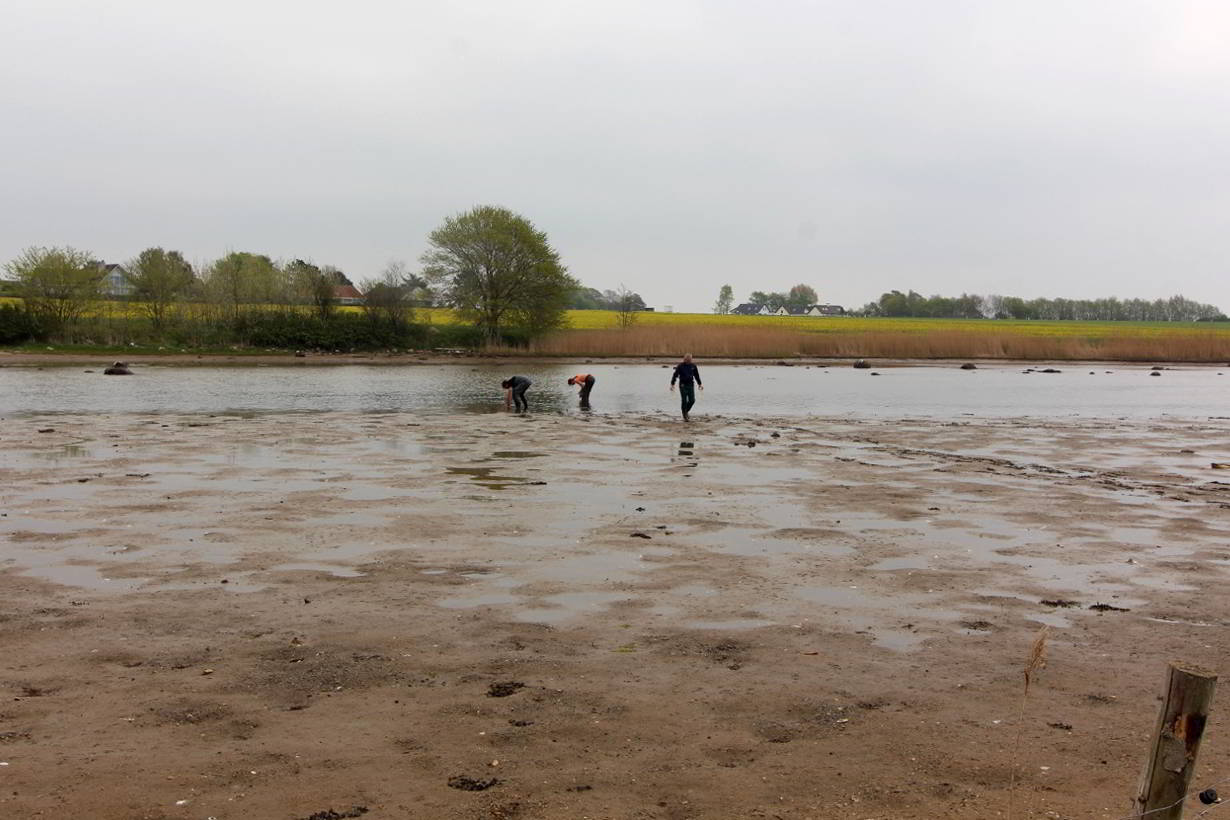News
31.07.2019
Coastal marine sediments contribute to the formation of greenhouse gases
University of Tübingen research team investigates microbial and chemical processes as a natural source of laughing gas
Nitrous oxide – or laughing gas – is a greenhouse gas nearly 300 times as harmful as carbon dioxide. Much of it is released by human activity, for example from fertilizers and in vehicle and industrial exhaust. But there are natural sources of nitrous oxide, too. For a long time, scientists had little idea of all the processes which lead to the formation of nitrous oxide or their magnitude. Now, a team of geomicrobiologists, headed by Professor Andreas Kappler and Dr. Caroline Schmidt, from the University of Tübingen’s Center for Applied Geoscience has identified an important source of nitrous oxide which is harmful to the environment. The team discovered that it is not solely bacterial activity which causes laughing gas formation – it is also due to chemical processes in coastal marine sediments. This source may well be responsible for the production of up to one quarter of all nitrous oxide formation. It is important to find out more about how climate-damaging gases are produced – and in what amounts – if we want to properly assess future climate developments. The study is published in the latest edition of Scientific Reports.
"Previously, it was assumed that nitrous oxide was mainly created as an intermediate product in the conversion of nitrate by bacteria in typical coastal marine sediments," says Andreas Kappler. However, this did not explain the full extent of the formation of laughing gas. Unexplained sources of nitrous oxide had been reported in various studies of natural systems such as river sediments and soils in rice fields. In the new study, the team took coastal sediment samples from the Danish Baltic Sea and simulated environmental conditions in artificial microcosms in the laboratory. In this controlled experiment, the different nitrous oxide formation process could be identified and quantified.
Microorganisms only produce the ingredients
This study showed that chemical denitrification is responsible for a considerable part of nitrous oxide production. Denitrification refers to the microbial conversion of nitrogen bound in nitrate into molecular nitrogen and nitrous oxide. "The raw materials for chemodenitrification, ferrous iron and nitrite, are formed by microbial processes in the sediment," explains Caroline Schmidt. However, microbes play no part in the conversion to nitrous oxide. The chemical reaction takes place spontaneously. "Laughing gas is produced and released extremely quickly," Schmidt says. The extent to which laughing gas is formed as a result of this reaction could explain its mysterious origin.
"We need to understand all the man-made and natural sources of greenhouse gases to be able to assess future climate developments," Kappler says. Schmidt adds: "The study illustrates how processes on the smallest scale – interactions between microorganisms and sediment chemistry – can have massive effects on global environment phenomena such as greenhouse gas emissions.”
Publication:
Otte JM, Blackwell N, Ruser R, Kappler A, Kleindienst S, Schmidt C. 2019. Cause and effects of N2O formation by nitrite-induced (chemo)denitrification in coastal marine sediment. Scientific Reports, 31st of July 2019, https://dx.doi.org/10.1038/s41598-019-47172-x
Contact:
University of Tübingen
Faculty of Science
Center for Applied Geoscience (ZAG)
Professor Dr. Andreas Kappler
+49 7071 29-74992
andreas.kapplerspam prevention@uni-tuebingen.de
Dr. Caroline Schmidt
+49 7071 29-75496
caroline.schmidtspam prevention@uni-tuebingen.de
Contact for press:
Eberhard Karls Universität Tübingen
Public Relations Department
Dr. Karl Guido Rijkhoek
Director
Janna Eberhardt
Research editor
+49 7071 29-77853
Fax +49 7071 29-5566
janna.eberhardtspam prevention@uni-tuebingen.de
www.uni-tuebingen.de/en/university/news-and-publications.html

